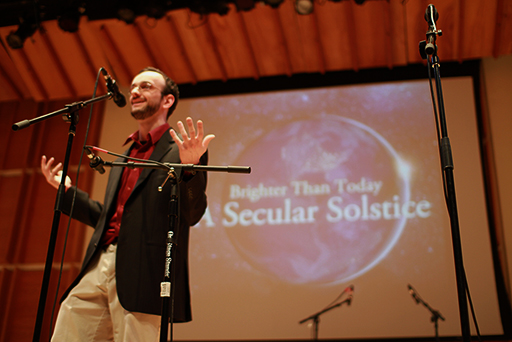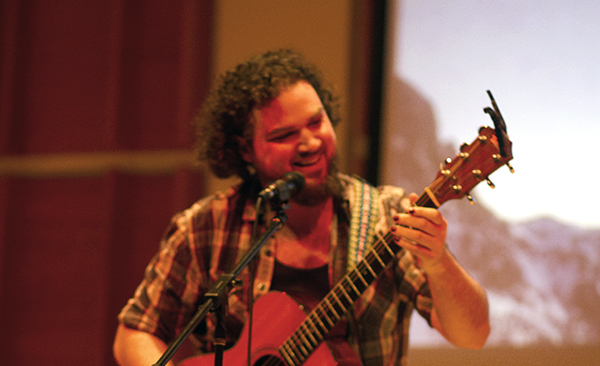This is the second post in a series about how to run the Solstice. Here’s the introductory post.
There’s a variety of things you need to run a Solstice. I’ll go into more details for each of these later on, but for here’s a broad overview of helpful things.
1. People
This is the most important part. If your venue falls through, if you have no money for food or decorations, a group of enthusiastic people can still come together in the night to celebrate humanity a la “Charlie Brown Christmas” or the end of “The Grinch.”
In particular, you will need leaders: 1-4 organizers, who bring particular skills to the table.
- Someone who brings positive, upbeat energy
- Someone who brings solemnity.
- Someone who coordinating supplies and logistics.
- Someone to songlead – NOT necessarily someone musically talented, but someone who is musically enthusiastic, who can make people feel comfortable singing along.
- Someone who can promote the event and bring together people who want to celebrate.
You’ll also need participants: People excited to be there. This can be 5 people, 50 or 500. What’s important is that a critical mass of them (at least 50%) are enthusiastic, ready to celebrate (non-ironically), ready to sing or dance or whatever activities you have prepared. (Again, they do *not* need to be good singers, they just need to enthusiastically ready to try things)
Now, what if you don’t have some of the above? In particular, what if you (as an organizer) don’t feel comfortable with public speaking, or singing, or leading a crowd?
I’d take this as an opportunity to grow. The Solstice is about humanity rising to overcome their challenges. And singing in public doesn’t have to be that scary!
The first year I ran the Solstice, I wasn’t sure if I’d be able to do it. I didn’t even have a person telling me that this could be done, that it was part of a growing tradition that would profoundly affect people.
And I’ll be honest: it was a little intimidating.
But it was a valuable learning experience.
2. A Place
You need a place for your gathering. This can be a living room, a large lounge, or an auditorium. Two important characteristics it needs are:
- Be physically comfortable. People will be there for at least an hour and probably two to four. Comfy chairs, couches or cushions to sit on are nice.
- Almost exactly enough space to fit your participants. You want people to feel cozy and you want the event to feel vibrant. You want enough space that people are comfortable but not so much that people are spread apart. You want people to feel surrounded by a community.
3. Things
None of these are strictly necessary, but they’ll make things run a lot smoother:
Food and drink – Sharing food is one of the most ancient ways humans built trust and connection. It’s the middle of winter, and we have plenty of food, and that’s worth celebrating!
Light sources – These can be candles, lanterns, electric lights or anything else you can find. It can be fun to have a variety of lights with different levels of technological sophistication, symbolizing the progress of humanity. (I recommend this rock salt lamp off Amazon, beautiful and pretty inexpensive)

Lyrics – One way or another, people need to know what to sing. You can go to the resources tab at humanistculture.com and find either lyric sheets to print out or a PowerPoint to display on a projector. (A projector is much better if you have it – that way everyone is focused on one place instead of crinkling papers in their lap, and people can continue to read even as you descend into darkness).
Optional Bonus Things you might want are:
Musical Accompaniment – Many songs can be sung without any instrumental accompaniment, but if you have people who can play guitar, piano, or more, that can help things feel more lively. If you don’t have skilled musicians, then depending on your group you can either have people sing on their own (if you want a natural feel), or play songs over a sound-system, to sing along to karaoke style.
Decorations – You’ve already got lights of some sort, but you may also want decorations reminiscent of the themes of the event (astronomy, fire, and human triumph over winter)

